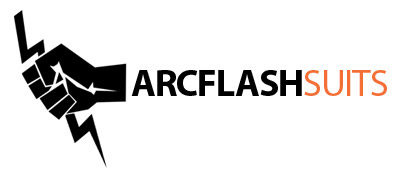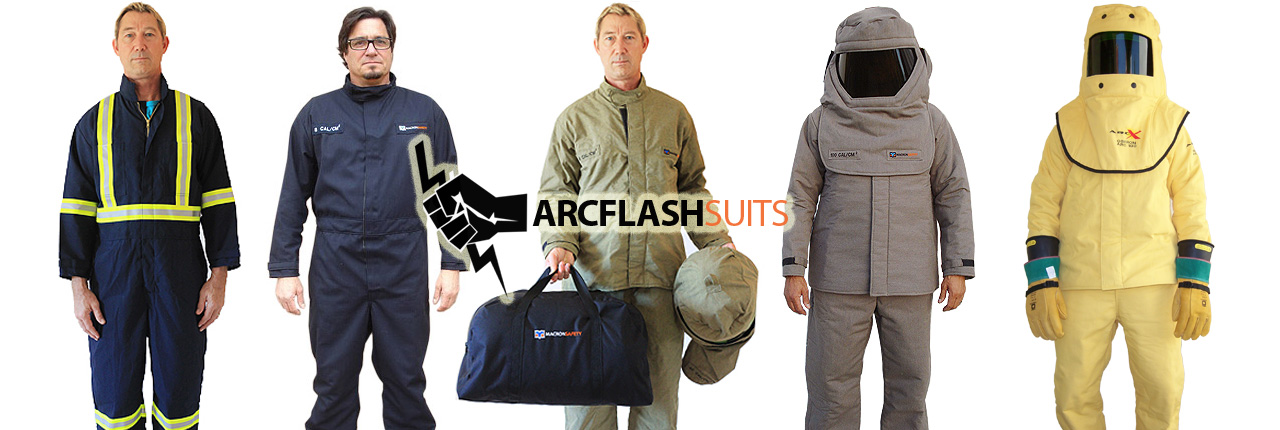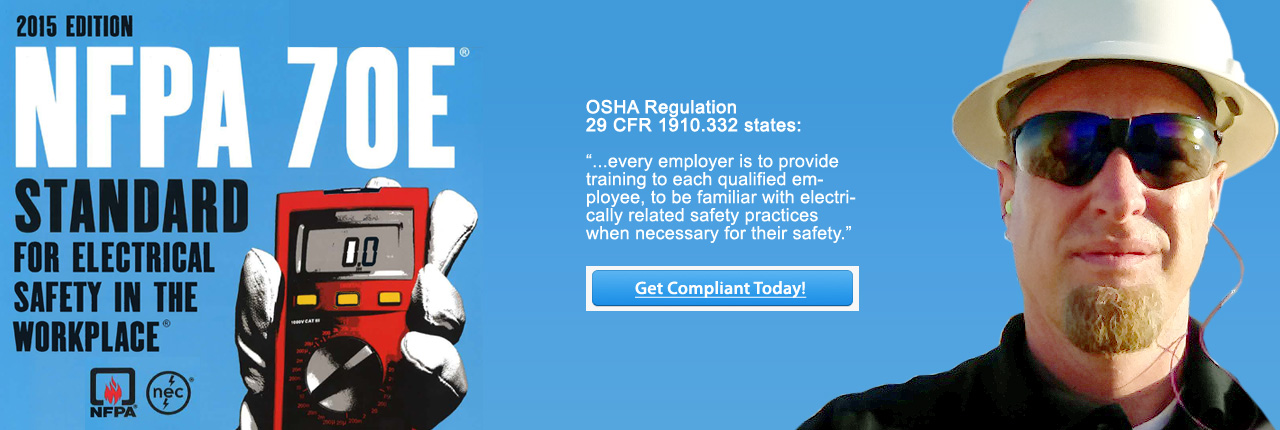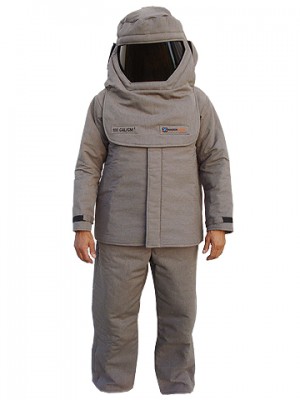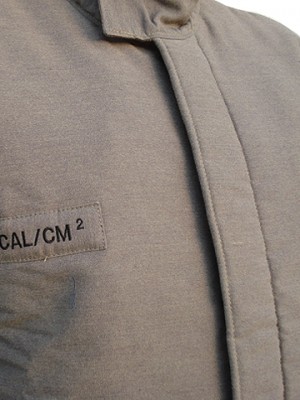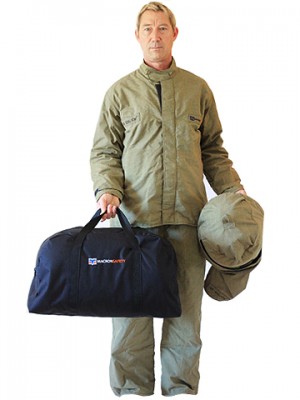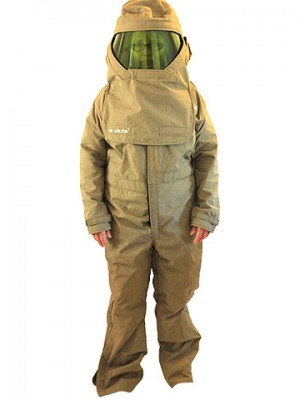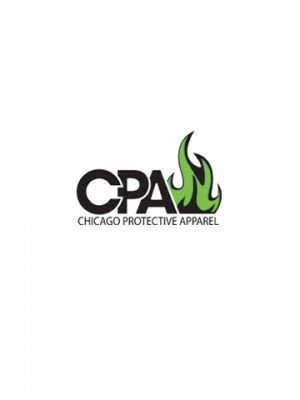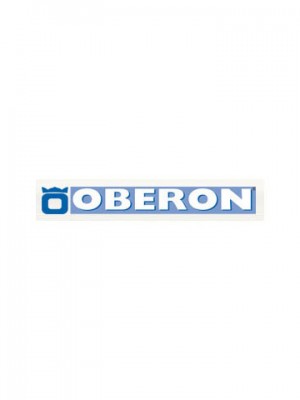Specializing in NFPA 70E Arc Flash Clothing
We incorporate technologically advanced fabrics and materials to provide true Arc-Rated protection.
According to the U.S. Bureau of Labor Statistics, 300 workers per year die from electrical shock on the job.
Our complete offering of safety tools and personal protective equipment help you meet the requirements of OSHA and NFPA 70E standards.
Arc flash suits are designed to protect employees from serious work place injuries or illnesses resulting from contact with chemical, radiological, physical, electrical, mechanical, or other workplace hazards. Many different types of safety clothing are available from aprons, smocks, coveralls, footwear, gloves, jackets, leggings, pants, vests, and hoods. The importance of arc flash suits cannot be underestimated to greatly reduce human exposure to dangerous and harmful environments. Cotton work clothes can be easily ignited by electric arc flash. Employees are now required by NFPA 70E to wear flame-resistant (FR) protective clothing that meets ASTM F1506 requirements wherever employees are exposed to the possibility of electric arc flash.
All materials used in arc flash suits are tough, durable, and provide varied levels of protection. The extent of coverage is extremely important and the materials we use are designed to provide resistance against abrasions, blasts, chemicals, crushing, liquids, and radiation.
- Latex, rubber and nitrile safety clothing is known for its resistance against different types of industrial liquids.
- Butyl is used for its resistance to water, steam, alkalis, and oxygenated solvents.
- Nitril provides good resistance to petroleum hydrocarbons and fuels. This type of clothing is widely used with most oils, hydraulic fluids, and alcohol.
- Aramid is a tough, light-weight, organic material that is used in most protective garments.
- Neoprene is a synthetic rubber that resists degradation from the environment and widely used widely with oils and chemicals
- Polyamides are strong, elastic, and extremely resistant to abrasions and chemicals.
The objective of OSHA and NFPA is to protect employees from electrical hazards. Potential hazards from electricity include electrical shock, arc-flash and arc-blast. Guidelines to ensure OSHA and NFPA 70E compliance.
- Employees working in areas where there are potential electrical hazard shall be provided with, and shall use, electrical protective equipment that is appropriate for the specific parts of the body to be protected and for the work to be performed.
- Protective equipment shall be maintained in a safe, reliable condition and shall be periodically inspected or tested, as required by 1910.137.
- If the insulating capacity of protective equipment may be subject to damage during use, the insulating material shall be protected.
- Employees shall wear non-conductive head protection wherever there is a danger of head injury from electrical shock or burns due to contact with exposed energized parts.
- Employees shall wear protective equipment for the eyes or face wherever there is danger of injury to the eyes or face from electrical arcs or flashes or from flying objects resulting from an electrical explosion.
- When working near exposed energized conductors or circuit parts, each employee shall use insulated tools or handling equipment, if the tools or handling equipment might make contact with such conductors or parts.
Arc flash clothing is designed to provide a barrier from heat and flame, to minimize total burn injury and to help provide the wearer with extra seconds of protection to help escape possible secondary explosions or fires in the work area. Arc Flash clothing can increase the chances of survival and decrease the need for medical treatment (skin grafts) and the chances of subsequent infections. It can help preserve the quality of life of a worker exposed to an electric arc event. Electrical workers must wear and be properly trained in the safe use and application of appropriate personal protective equipment for the possible electrical hazard with which they may face.
Arc Flash Suits are designed to provide protection from arc flash heat exposures. The materials used are manufactured with 98% inherently FR aramid, and 2% anti-static fiber. Each suit is made of Arc flash Resistant, DuPont™ material sewn with Nomex™ thread. They will remain Flame Resistant after years of frequent and repeated laundering.
Most Popular Arc Flash Suits
- Proper cleaning and maintenance of arc flash suits is extremely important to ensure long-lasting durability.
- Use warm water at 40°C.
- Use mild detergent with a PH of 8.0 – 8.75.
- For home laundering, we suggest using a perfume-free and dye-free liquid detergent with a PH of 8.1, such as Tide.
- Chlorine or peroxide bleach will not affect the Inherent Flame Resistance of any of our garments. We do not recommend using bleach, however, because it weakens the fiber and reduces its life.
- Dry – Tumble dry low heat and remove immediately. Do not line dry. All garments should be free of contaminants. Flammable contaminants can reduce protection level.
- Maintenance – Always keep hood window clean for the best vision. The faceshield can be cleaned with water and mild soap and dried with a soft cloth.
- ATPV: Arc Thermal Performance Value, represented in cal/cm2.
- NFPA 70E: Clothing requirements for employees working on energized electrical parts.
- OSHA 29 CFR 1910.269: Clothing requirements for workers exposed to electrical or flash fire hazards in the workplace.
- ASTM F 1959: Determines Arc Thermal Performance Value (ATPV) of flame-resistant textile materials for clothing/clothing systems by simulated electric arc exposures.
- ASTM F 1930: Simulated flash fire exposure test using a mannequin (3,000 degrees for 3 seconds ).
- ASTM F 1506: Standard performance specification for textile materials for wearing apparel for use by electrical workers exposed to arc and thermal hazards.
- ASTM D6413: Standard test method for measuring FR of fabrics (Vertical Test).
- ASTM F955: Standard test method for molten splash, pass or fail determined by:
- Will not continue to burn or ignite when heat source is removed.
- Must demonstrate ability to shed molten metal without sticking or forming a hole.
